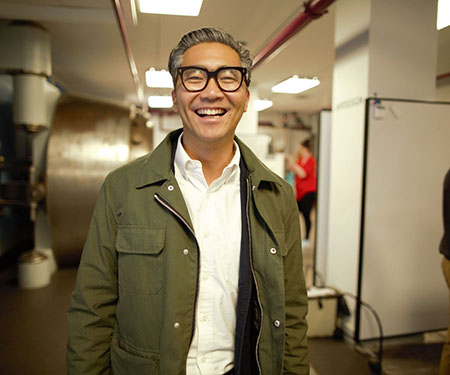Putting People First in Healthcare
Some of the top innovators at Medtronic recently held a virtual forum to discuss ways to accelerate the principles of human-centered design
As an emergency room physician in Philadelphia, Dr. Bon Ku sees firsthand how poorly designed hospitals fail both patients and clinicians.
From cramped and chaotic emergency rooms to medical devices that come with operating manuals the size of a phone book, our current healthcare system needs to be reimagined, Ku says.
“Healthcare is not designed for humans,” Ku says. “It’s not designed for clinicians. It’s not designed for patients. And that’s a problem

Medtronic, however, is determined to solve that problem.
By embracing a concept known as human-centered design, our company is doubling down on our efforts to better understand the needs of the people we serve . In the simplest terms, human-centered design is about putting people at the forefront of the design process to create products that improve users’ lives.
Human-centered design is flourishing at Medtronic, where cross-functional teams are working together to create better, more inclusive experiences for both patients and clinicians alike.
Some of those teams recently came together for a virtual forum focused on human-centered design. The event, which featured Dr. Ku as a keynote speaker, drew more than 250 employees from several countries around the world.

“The teams at Medtronic focused on human-centered design work closely with our patients and customers to ensure our products and therapies best meet their needs — not only from a clinical perspective, but also from a user experience,” said Medtronic Chairman and CEO Geoff Martha. “I think this is the type of work that’s going to ensure we’re fulfilling the Medtronic Mission for many years to come.”
Creating a human-centered design discipline at Medtronic
Medtronic has always put people at the center of its design process. But as patients continue to expect more from their health care, they also expect more from their devices. People don’t want just their clinical needs met — they want their emotional needs met, too.
With support from the Innovation Lab — the company’s hub that supports the creation of a wide range of products and therapies anchored in human-centered design — departments across Medtronic are developing deeper understandings of our patients and providers.
Armed with that knowledge, the company is creating devices and therapies that are shaping better experiences for both clinicians and patients.

“Patients and engineers often have different views about what the ultimate user experience might look like with any given medical device,” said Danny Gelfman , Distinguished Designer at the Medtronic Innovation Lab and one of the forum organizers. “For example, some patients with diabetes might say their ultimate user experience is being able to ride a bike after dinner or going out to a restaurant with their family. An engineer might say the best user experience is defined by healthy glucose levels. As designers, we can’t lose sight of either perspective”
So, what does good human-centered design work look like?
During the forum, the first-ever Human-Centered Design Impact Awards were presented to the following Medtronic teams for creating exemplary work this past year:
- SenSight™ Deep Brain Stimulation - A team within the Neuroscience portfolio was recognized for rethinking the user experience associated with a deep brain stimulation implant and procedure. Judges cited the team’s empathy for both patients and clinicians throughout the entire design process.
- Hugo™ Robotic Assisted Surgical System - This team picked up the award for keeping the user experience at the forefront of the development process of the company’s first soft-tissue surgical robotic system.
- Medtronic Discovery App™ - Faced with the stark reality that the company’s traditional model of recruitment for research studies didn’t work during the COVID-19 pandemic, an all-women team of designers and engineers from the Cardiovascular Diagnostics and Services business created a digital platform that improves participant engagement and operates with greater speed and efficiency.
“It’s very clear from the amount of award submissions that we received that there’s so much energy and momentum around human-centered design at Medtronic,” said Diana Gunnarson, a senior engineering director at Medtronic who helped judge the awards. “As this community grows, we expect to create even more awareness around the benefits of human-centered design.”

How outside-of-the-box thinking will transform healthcare
As the director the Health Design Lab at Thomas Jefferson University in Philadelphia, Ku trains medical school students to think about good design in their approach to healthcare. And that means putting patients first.
“Healthcare tends to be very siloed,” he said. “The medical device industry, the pharmaceutical industry, healthcare systems, insurers, doctors….no one talks to each other. But I believe good design can thread those siloes, especially when we have a common interest.”
While Ku says healthcare has traditionally been a “black hole” for good design, he’s now optimistic that things are changing.
He points to the COVID-19 pandemic, which spurred the kind of creative problem-solving that serves as the foundation for human-centered design.
That kind of innovation was certainly on display at Medtronic during the pandemic. For example, when clinicians couldn’t safely see their patients in-person, the company responded by offering more virtual care solutions. And when global supply chain problems threatened the production of ventilators, Medtronic shared the design specifications of these critically needed devices.
Ku is encouraged that companies like Medtronic are leaning into human-centered design.
“The role that medical device makers have to play in reimagining healthcare is tremendously important,” Ku said. “A well-designed device can improve outcomes for patients. But it also must be designed for the clinicians who use the device and the people who clean them. We must design for humans.”
Timely Insights from Thought Leaders
Learn More: Perspectives
L001-06242021
